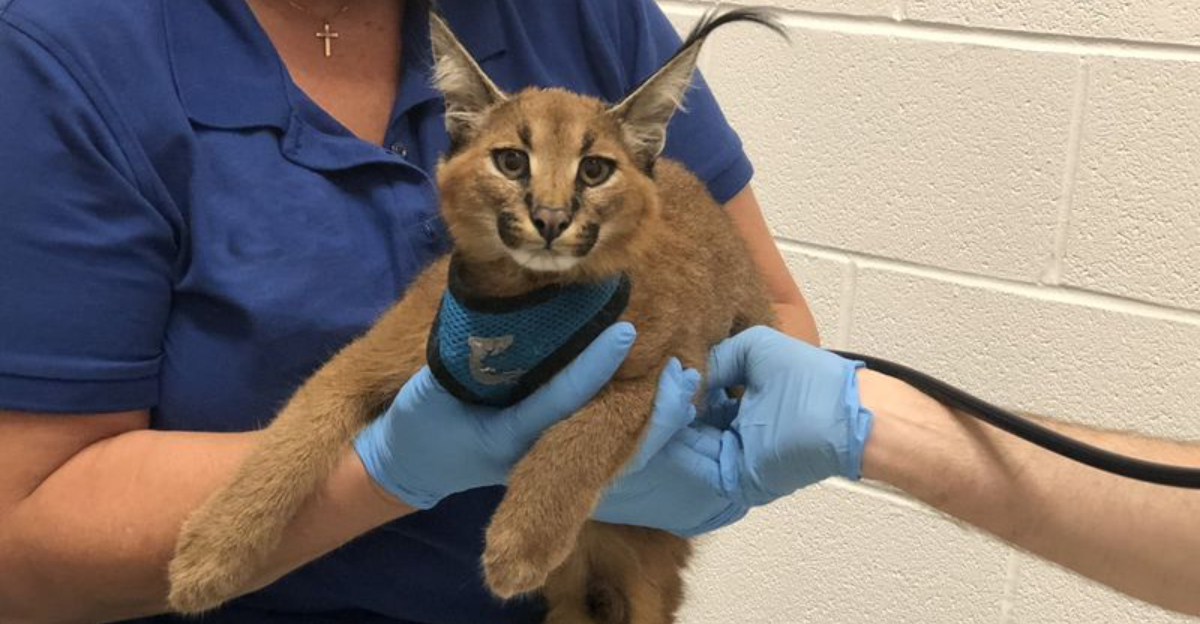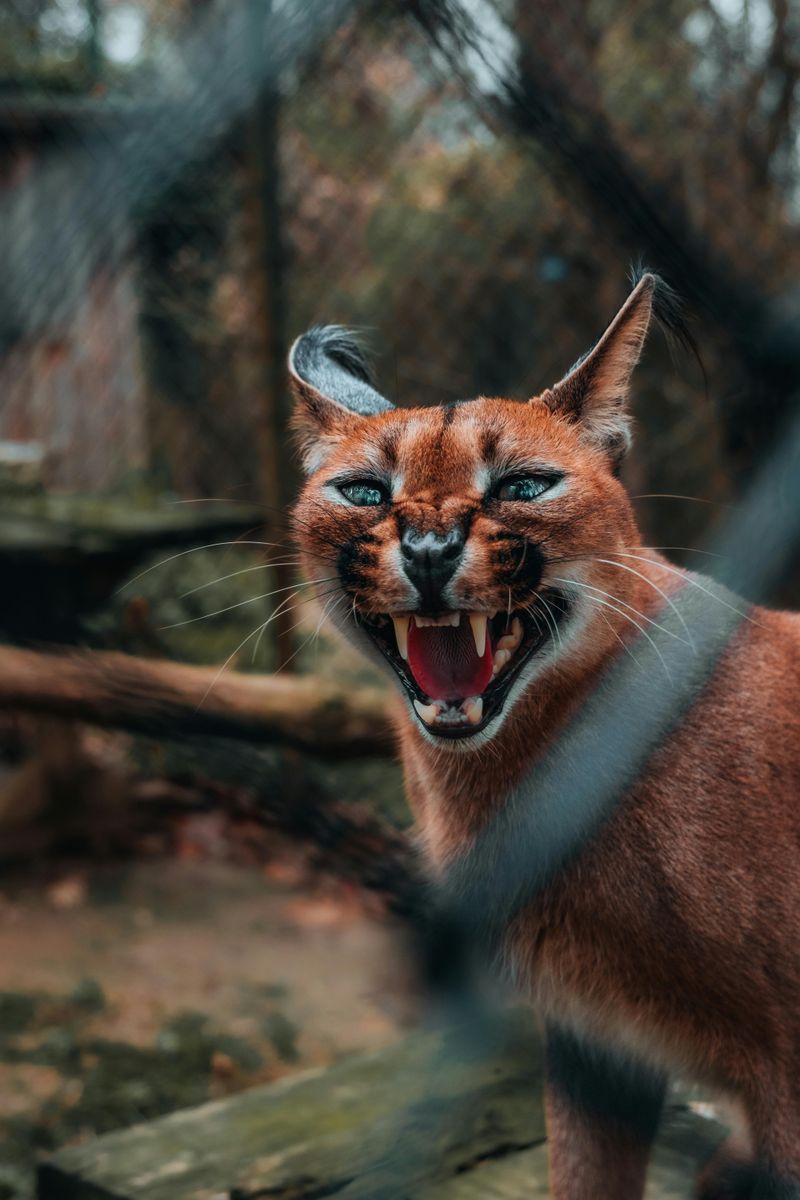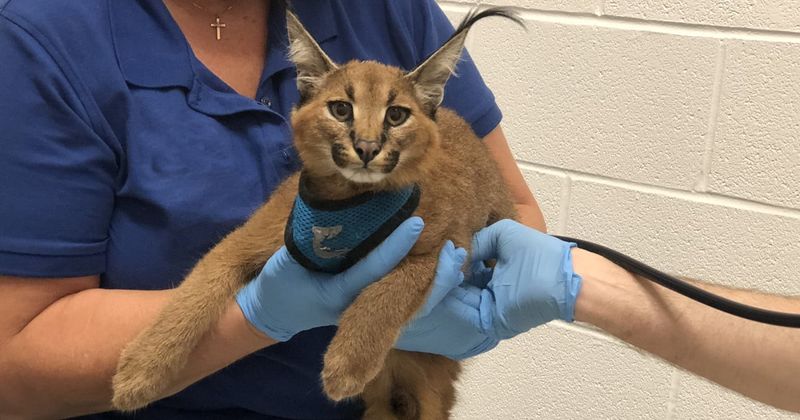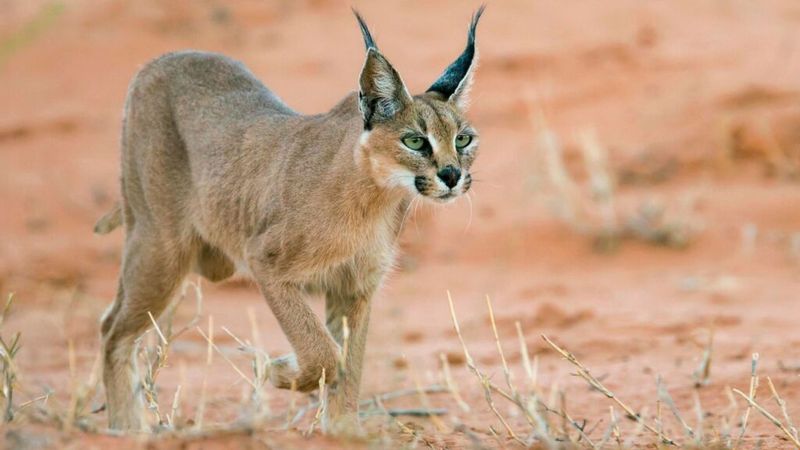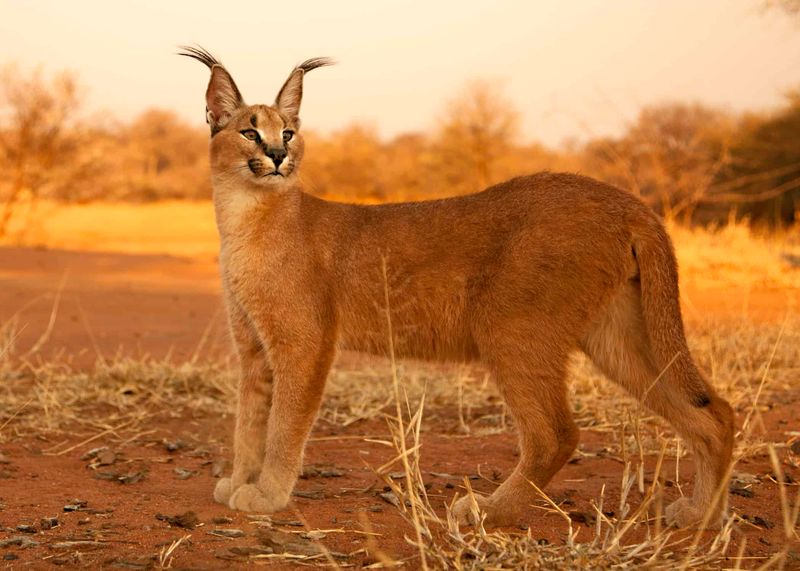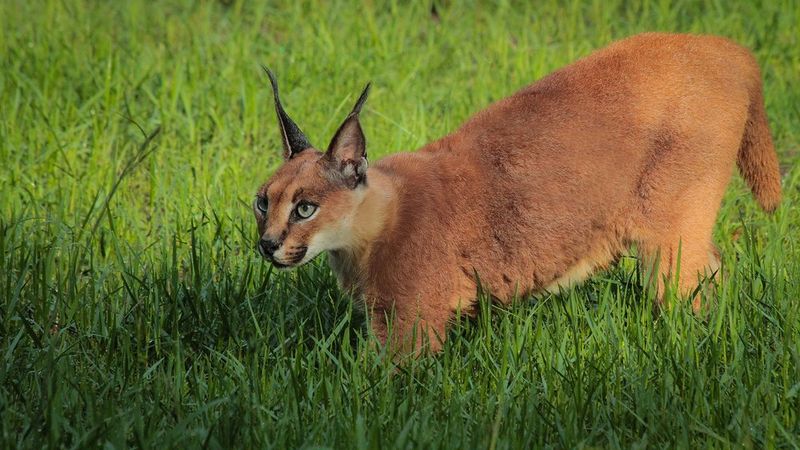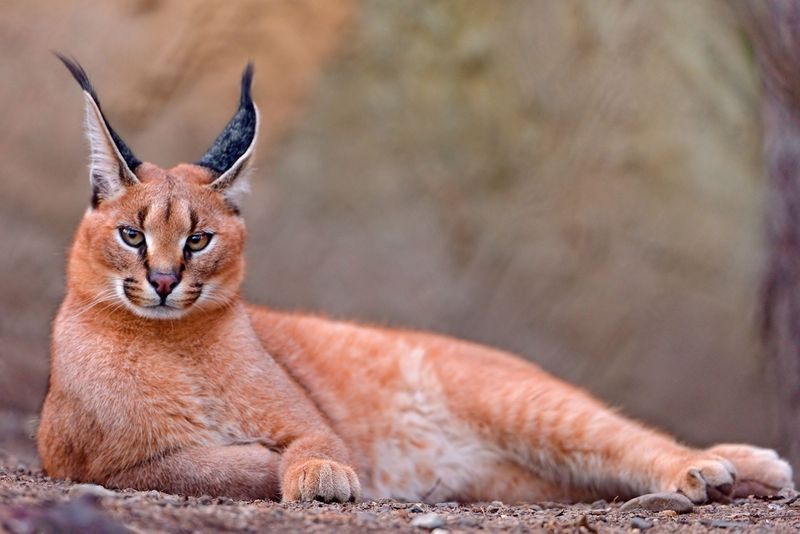📖 Table of Content:
With their sleek bodies, striking golden coats, and those iconic black ear tufts, caracals look like they stepped straight out of a fantasy novel. These wild cats — native to parts of Africa, the Middle East, and Central Asia — have gained increasing attention on social media and exotic pet forums. Their exotic appearance and feline mystique have led some to wonder: could a caracal make a unique and captivating pet?
At first glance, the idea might seem thrilling. Caracals are agile, intelligent, and undeniably majestic. Videos of them leaping six feet in the air or lounging with their owners paint a picture of a wild cat that’s surprisingly tame. But what often gets lost in the viral allure are the very real challenges and consequences of trying to turn a wild predator into a companion animal.
In truth, caracals are not suitable household pets — for reasons that go far beyond personal preference. From legal and ethical concerns to serious safety risks, owning a caracal comes with responsibilities and dangers that most people aren’t equipped to handle. Below, we explore seven key reasons why keeping a caracal as a pet is not just difficult — it’s deeply problematic.
1. They’re Wild by Nature, Not Domesticated
Unlike domestic cats that have evolved alongside humans for thousands of years, caracals remain inherently wild. Their instincts are tuned for survival in harsh environments, not companionship on a living room couch. Even when raised from kittenhood, these cats don’t respond to affection or discipline in predictable ways. Behavioral issues such as aggression, spraying, or attacking small animals tend to emerge regardless of training. It’s not just a matter of “taming” them — their entire psychology is built around independence and control. In contrast to docile pets, caracals are territorial, solitary, and highly reactive to unfamiliar situations. This makes them fundamentally incompatible with typical home life.
2. Legal Restrictions and Permits
Owning a caracal isn’t just a personal choice — it’s often a legal one too. Many jurisdictions either prohibit their ownership outright or require extensive licensing, inspections, and insurance. Regulations exist for good reason: caracals pose significant risks, and most households can’t meet their specialized needs. Failing to comply with local wildlife laws can result in hefty fines, loss of the animal, or criminal charges. Even if you acquire one legally, relocation or travel can create further complications. Authorities also keep a close watch on exotic animal ownership due to increasing concerns about animal welfare and public safety. So before imagining a caracal as a companion, one must face a wall of legal hurdles that signal its unsuitability as a pet.
3. Destructive Behavior in the Home
Don’t let their elegance fool you — caracals are powerful animals with strong muscles, sharp claws, and boundless energy. In a home, that energy has nowhere to go but into destruction. Furniture, walls, and windows can become unintentional targets for scratching, biting, or pouncing. Typical enrichment toys barely satisfy their natural need for hunting, leaping, and stalking. While a domestic cat might knock over a lamp, a caracal could tear through a doorframe. Keeping them confined indoors creates intense frustration, which often leads to behavioral outbursts. This turns a beautiful cat into a danger to your belongings — and eventually, to your peace of mind.
4. Safety Risks to People and Pets
Despite their elegant appearance, caracals are strong predators with the ability to inflict serious injuries. Their claws and teeth pose a danger to humans and other pets, especially if the caracal feels threatened or overstimulated. Children may be at particular risk due to their smaller size and unpredictable movements. The combination of their predatory instincts and physical prowess makes caracals a safety risk, emphasizing the unsuitability of keeping them in a domestic setting.
5. Complex Dietary and Healthcare Needs
Feeding a caracal goes far beyond kibble or canned food — they require a biologically appropriate diet that mimics what they’d eat in the wild. Raw meat, bones, and even whole prey like rabbits or chicks are necessary for their health. Without it, caracals can suffer from malnutrition, dental issues, or digestive problems. But sourcing and storing such a diet isn’t cheap or convenient. On top of that, very few veterinarians have the training to treat exotic cats. Emergencies can be costly, logistically complicated, or even fatal without immediate access to expert care. What seems like a simple health issue in a pet becomes a major ordeal with a caracal.
6. Ethical Concerns and Conservation Impact
Keeping caracals as pets raises serious moral questions about animal welfare and conservation. These animals belong to delicate ecosystems where their roles as predators help maintain natural balance. Captive breeding for the exotic pet trade often prioritizes profit over ethics, with many kittens removed from their mothers too early. Moreover, encouraging demand for wild animals fuels illegal trafficking and the exploitation of vulnerable species. While some owners may have good intentions, the broader consequences ripple far beyond the household. Every caracal removed from the wild or bred in captivity is another step away from conservation goals. Choosing not to keep them as pets is part of respecting their natural role in the world.
7. They Don’t Thrive in Captivity
Despite an owner’s best efforts, a caracal kept in captivity often experiences psychological distress. They are used to roaming large territories, climbing, and stalking prey for miles. Caging or indoor living robs them of the freedom that defines their existence. Even outdoor enclosures rarely meet their spatial and sensory needs. Chronic boredom can manifest as pacing, aggression, or self-harm behaviors. Over time, what begins as a novel pet ends as a deeply unhappy animal. Captivity, no matter how luxurious, will never replicate the wild where caracals are truly alive.
